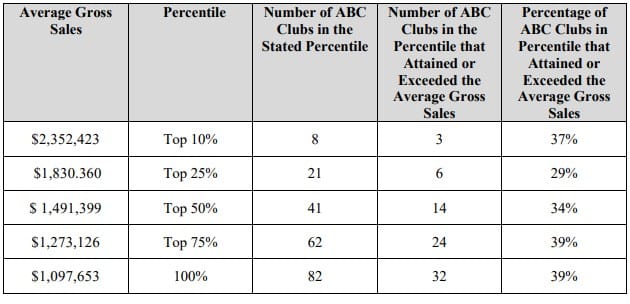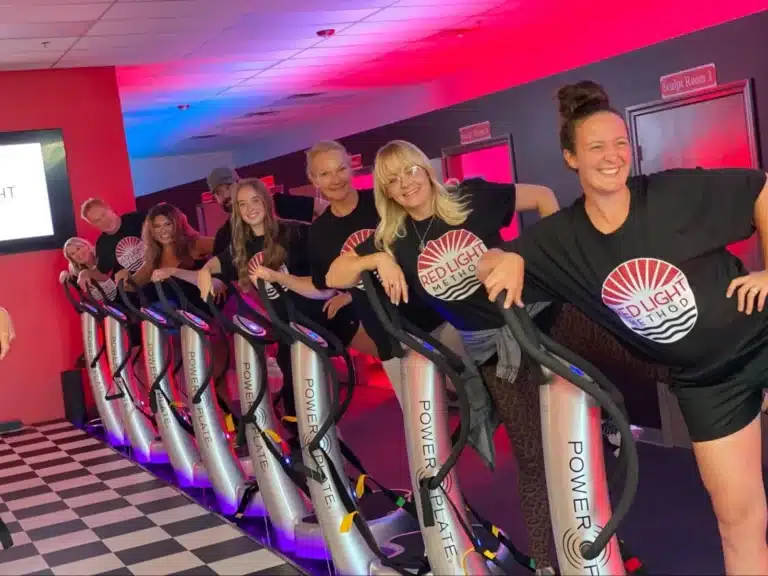Retro Fitness Franchise FDD, Profits & Costs (2025)

Established in 2004 by Eric Casaburi, Retro Fitness is a gym franchise capitalizing on a unique approach to health and wellness. The company, headquartered in West Palm Beach, Florida, began offering franchise opportunities two years later in 2006.
Retro Fitness positions itself as a high-value, low-price alternative in the fitness industry. Their gyms provide a comprehensive fitness experience, including cardio and strength training equipment, group fitness classes, and personal training options.
Retro Fitness differentiates itself from competitors by fostering a fun and welcoming atmosphere, often incorporating a 70s and 80s theme into their facilities. This creates a distinct appeal for budget-minded gym-goers who seek a less intimidating workout environment.
Initial Investment
How much does it cost to start a Retro Fitness franchise? It costs on average between $1,483,000 – $2,273,000 to start a Retro Fitness franchised business.
This includes costs for construction, equipment, inventory, and initial operating expenses. The exact amount depends on various factors, including the type of facility you choose, the location, and whether the franchisee chooses to lease or purchase the property.
| Type of Expenditure | Amount |
|---|---|
| Initial Franchise Fee | $29,000 |
| Opening Advertising Pre-sales | $30,000 – $90,000 |
| Marketing Kit | $12,000 – $15,000 |
| Trailer Rental (if needed) | $0 – $30,000 |
| Office Supplies | $1,000 – $2,000 |
| Computer Equipment | $5,000 – $7,000 |
| Branded Key Tags | $216 |
| Opening Inventory | $10,000 – $15,000 |
| Insurance and Bond | $6,000 – $24,000 |
| Signage | $35,000 – $45,000 |
| Equipment and Furnishings | $100,000 – $150,000 |
| Prepaid Rent and Security Deposit | $0 – $75,000 |
| Lease Review Fee | $2,500 |
| Turnkey Build-Out Service Fee | $15,000 – $45,000 |
| Architectural fees | $35,000 – $50,000 |
| Leasehold Improvements/Fit out | $1,000,000 – $1,300,000 |
| Utility Deposits | $0 – $3,500 |
| Licenses and Permits | $500 – $30,000 |
| Fictitious Name Registration and/or Incorporation and Legal Review | $250 – $1,500 |
| Travel, Lodging, Meals Etc. for Initial Training | $0 – $3,500 |
| Miscellaneous Start-up Costs | $2,000 – $5,000 |
| Additional Funds | $200,000 – $350,000 |
| Total | $1,483,000 – $2,273,000 |
Average Revenue (AUV)
How much revenue can you make with a Retro Fitness franchise? A Retro Fitness franchised business makes on average $1,098,000 in revenue (AUV) per year.
Here is the extract from the Franchise Disclosure Document:

This compares to $401,000 yearly revenue for similar fitness franchises. Below are 10 Retro Fitness competitors as a comparison:
Download the Franchise Disclosure Document
Frequently Asked Questions
How many Retro Fitness locations are there?
As of the latest data, Retro Fitness operates 89 franchised locations, all based in the United States. There are no company-owned locations; the entire network consists solely of franchise-operated gyms.
Retro Fitness is focused on expanding through franchise partnerships, with initiatives targeting underserved communities to further grow its presence.
What is the total investment required to open a Retro Fitness franchise?
The total investment required to open a Retro Fitness franchise ranges from $1,483,000 to $2,273,000.
What are the ongoing fees for a Retro Fitness franchise?
For a Retro Fitness franchise, the ongoing fees include a royalty fee of 5% to 7% of gross sales. This fee is charged to support the overall brand, its operations, and services provided by the franchisor. In addition to the royalty fee, franchisees are required to contribute 2% of their gross sales towards marketing fees.
What are the financial requirements to become a Retro Fitness franchisee?
To become a Retro Fitness franchisee, you need a minimum net worth of $1.5 million and at least $500,000 in liquid capital. These financial requirements help ensure that franchisees are well-prepared to manage the investment and operational costs of the business.
How much can a Retro Fitness franchise owner expect to earn?
The average gross sales for a Retro Fitness franchise are approximately $1.1 million per location. Assuming a 15% operating profit margin, $1.1 million yearly revenue can result in $165,000 EBITDA annually.
Who owns Retro Fitness?
Retro Fitness is owned by Eric Casaburi, who founded the company in 2004. Casaburi has been instrumental in growing the franchise into a popular chain of fitness centers across the United States, focusing on providing affordable gym memberships and personalized fitness experiences.
Disclaimer
Disclaimer: This content has been made for informational and educational purposes only. We do not make any representation or warranties with respect to the accuracy, applicability, fitness, or completeness of the information presented in the article. You should not construe any such information or other material as legal, tax, investment, financial, or other professional advice. Nothing contained in this article constitutes a solicitation, recommendation, endorsement, advertisement, or offer to buy or sell any franchises, securities, or other financial instruments in this or in any other jurisdiction in which such solicitation or offer would be unlawful under the franchise and/or securities laws of such jurisdiction.
All content in this article is information of a general nature and does not address the detailed circumstances of any particular individual or entity. Nothing in the article constitutes professional and/or financial and/or legal advice, nor does any information in the article constitute a comprehensive or complete statement of the matters discussed or the law relating thereto. You alone assume the sole responsibility of evaluating the merits and risks associated with the use of any information or other content in this article before making any decisions based on such information or other content.




